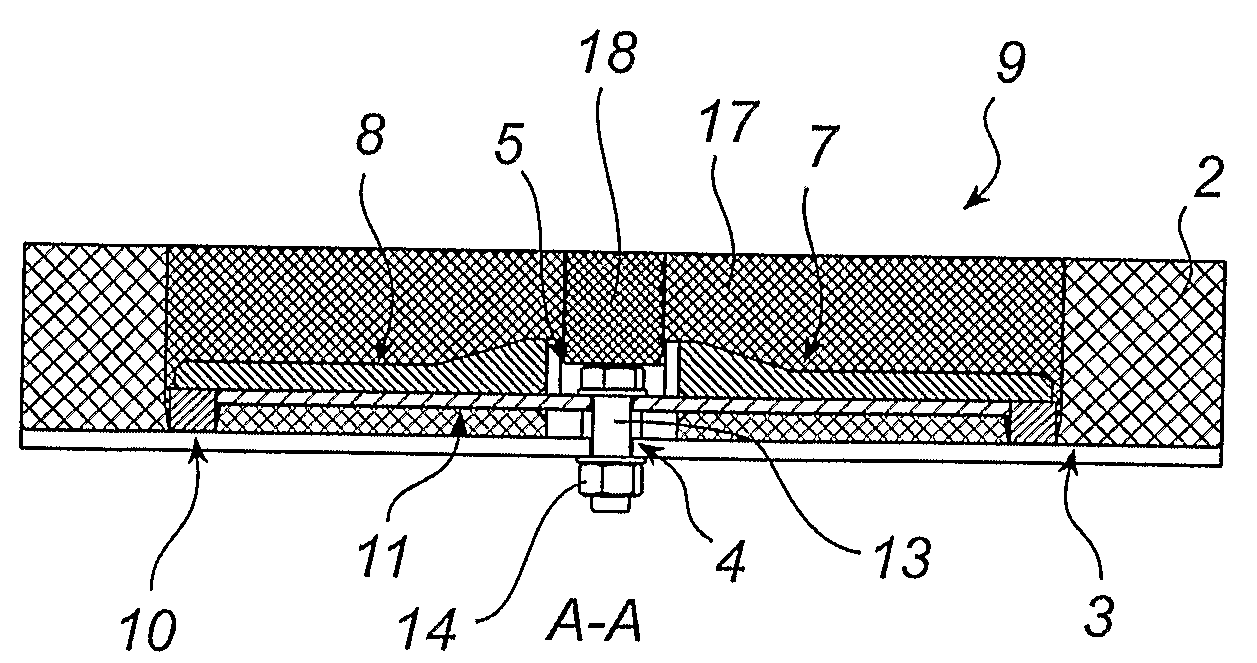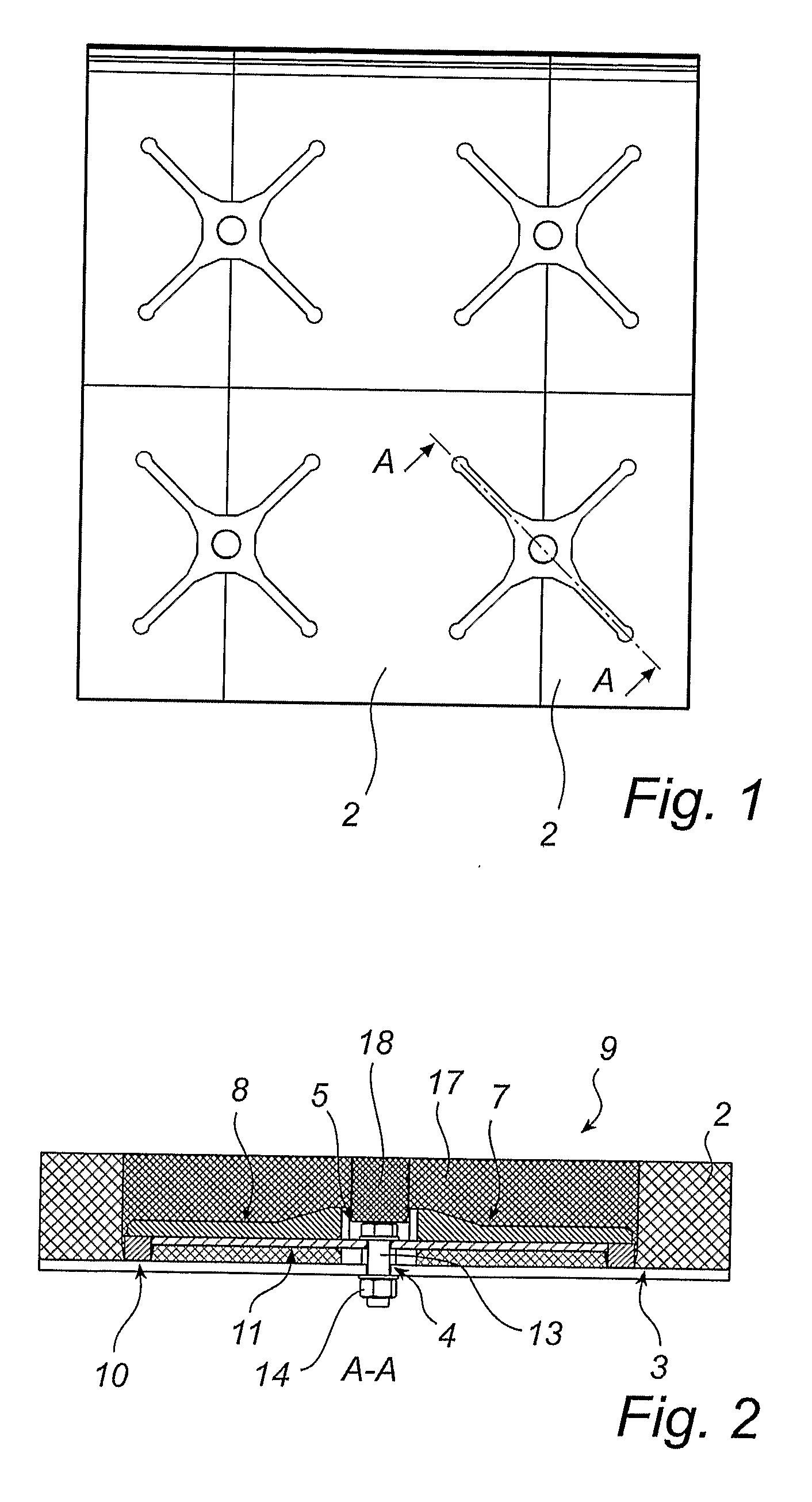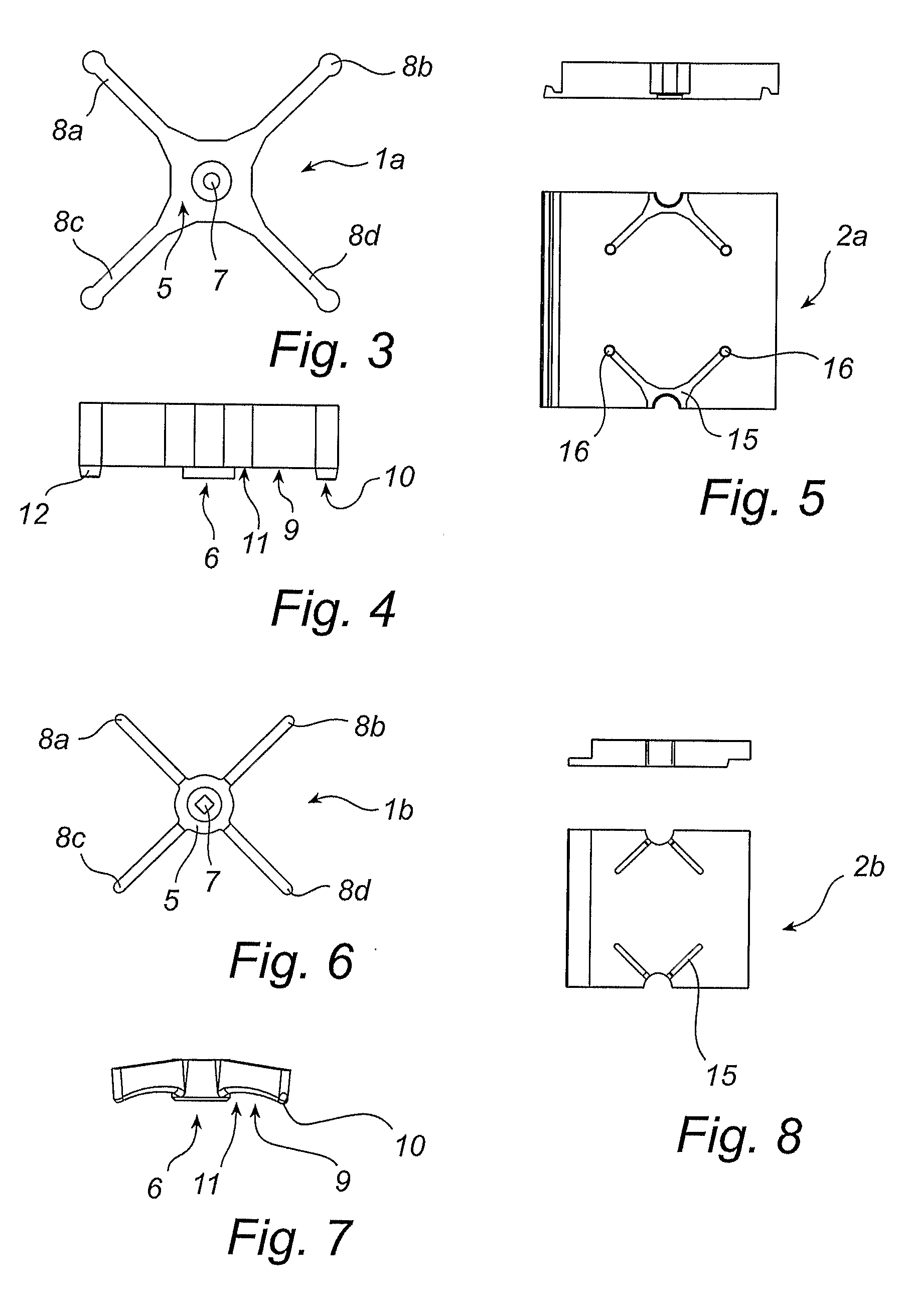Fastening Spider and Method of Fastening
a technology of fastening devices and spiders, which is applied in the field of fastening spiders, can solve the problems of ineffective fastening of fastening devices, significant wear on the surface over which the material moves, and relatively complicated and expensive in both construction and installation, and achieves the effects of simple construction, easy and inexpensive manufacturing, installation and replacement, and greater holding for
- Summary
- Abstract
- Description
- Claims
- Application Information
AI Technical Summary
Benefits of technology
Problems solved by technology
Method used
Image
Examples
Embodiment Construction
[0047]FIGS. 1 and 2 illustrate a wear lining 19 with a fastening spider 1 which fastens two wear-resistant lining elements 2 to a support surface 3. The support surface 3 has a mounting point 4 in the form of a through hole.
[0048]FIGS. 3 and 4 illustrate the fastening spider 1a which has a central mounting portion 5. The mounting portion 5 has an underside 6, a through hole 7 and four projecting legs 8a-8d. Each leg has an underside 9 which in turn has an outer portion 10 and an inner portion 11. In this embodiment, the outer portion 10 has a supporting point 12 directed towards the support surface 3. The fastening of the fastening spider 1a to the mounting point 4 occurs by means of a bolt 13 which extends through the mounting point 4 of the support surface and the hole 7 of the mounting portion. The bolt 13 is tightened by means of a nut 14.
[0049]FIG. 5 illustrates the wear-resistant lining element 2a which is intended for the fastening spider 1a according to FIG. 3. The wear-resi...
PUM
 Login to View More
Login to View More Abstract
Description
Claims
Application Information
 Login to View More
Login to View More - R&D
- Intellectual Property
- Life Sciences
- Materials
- Tech Scout
- Unparalleled Data Quality
- Higher Quality Content
- 60% Fewer Hallucinations
Browse by: Latest US Patents, China's latest patents, Technical Efficacy Thesaurus, Application Domain, Technology Topic, Popular Technical Reports.
© 2025 PatSnap. All rights reserved.Legal|Privacy policy|Modern Slavery Act Transparency Statement|Sitemap|About US| Contact US: help@patsnap.com



